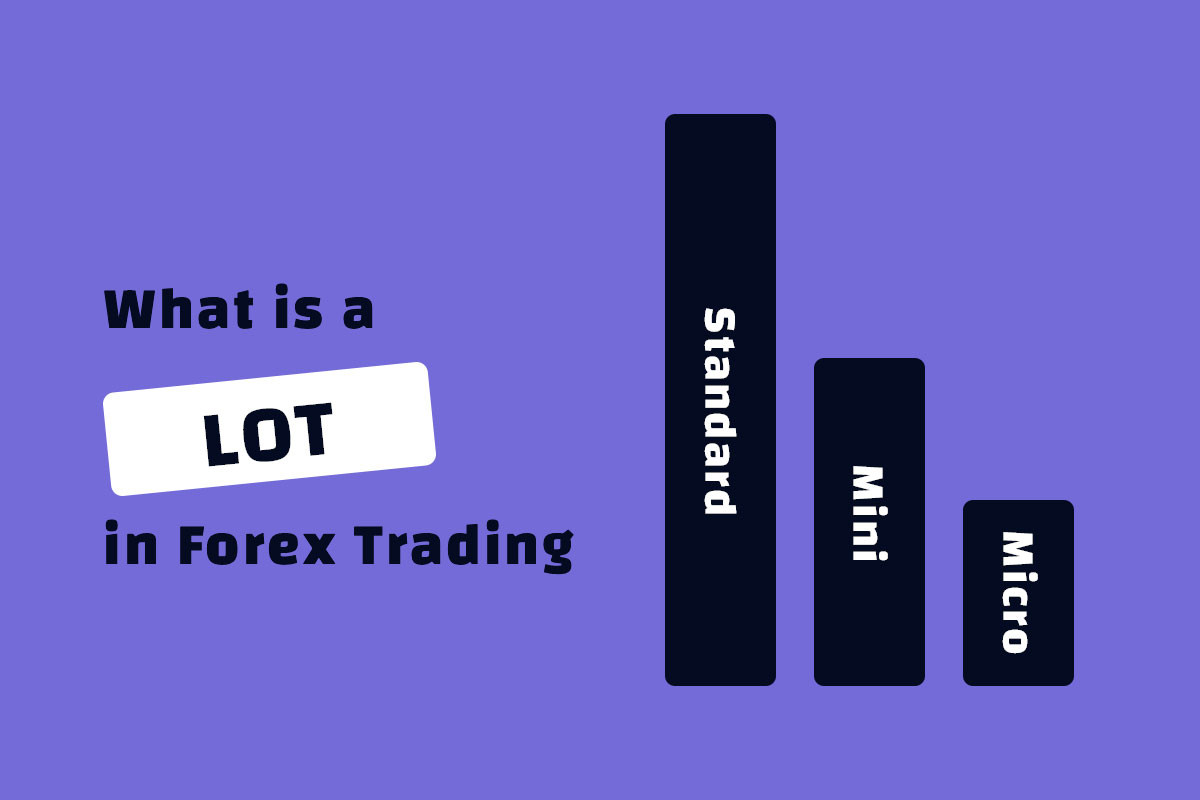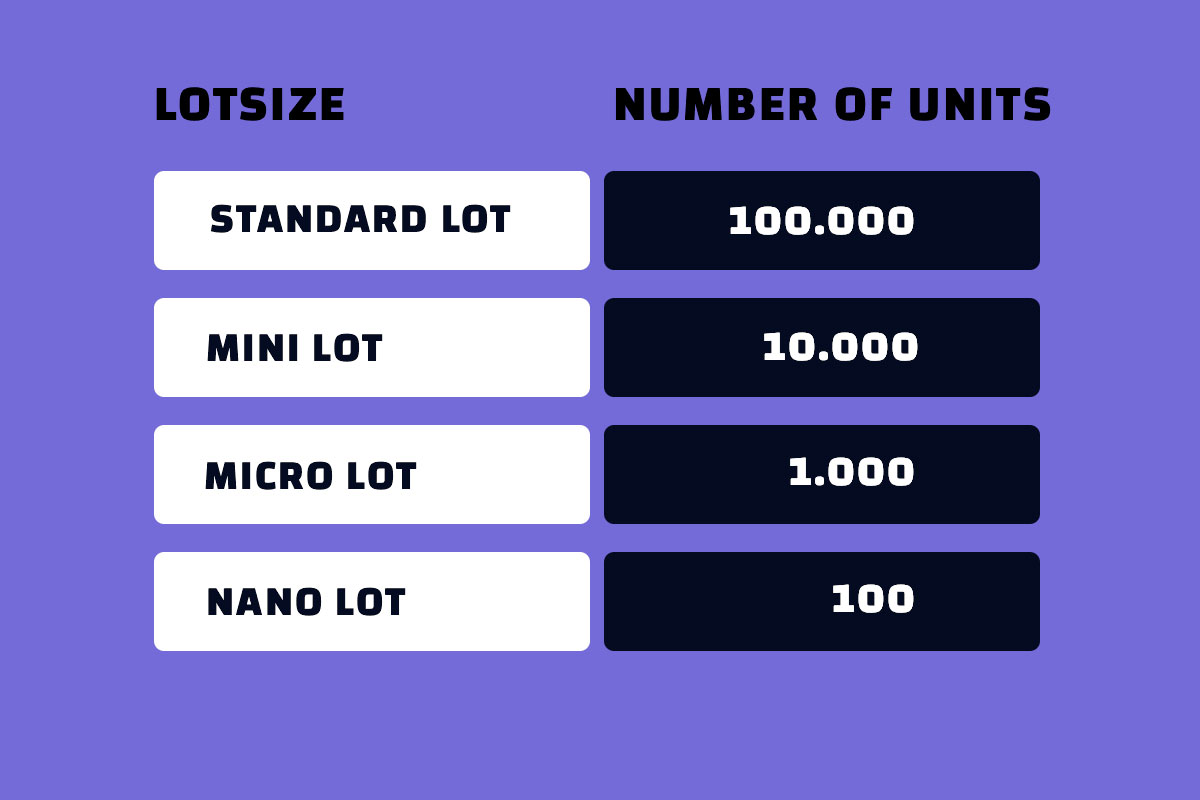What is a lot in forex trading

Think of lot size as the amount you're willing to risk on each trade. Getting this right is crucial for two big reasons:
Firstly, it's all about protecting your money. Picking the right lot size helps you manage risk smartly, keeping your hard-earned cash safe while still aiming for profits.
Secondly, when you're following our forex signals (tips on what trades to make), choosing the right lot size ensures you're putting the right amount of money on the line. This way, you can stay in line with your goals and trade confidently.
Stick with us as we break down lot sizing in forex trading, making it simple and clear so you can trade smarter and with more confidence.
WHAT IS A LOTSIZE IN FOREX TRADING
In the world of forex trading, we use a term called "lotsize" to talk about the amount of currency we're trading. Think of it like ordering eggs: when you buy eggs, you typically buy a whole box. In forex, one "lot" is like onebox and it contains a specific number of currency units.
So, when you place trades on your trading platform, you're actually buying or selling currency in these predefined amounts called lots. For example, the standard size for a lot is 100,000 units of currency (1 lot).
Imagine you're buying eggs, and each box contains 12 eggs. Similarly, in forex trading, each lot typically contains a specific number of currency units, helping traders manage their transactions more efficiently.
And here's a fun fact: while the standard size for a lot is 100,000 units of currency, there are also mini, micro, and nano lot sizes available. These smaller sizes are 10,000, 1,000, and 100 units respectively, providing traders with more flexibility in their trading strategies so you can start following our Forex Signals with even a low starting budget.

Lotsize explained
Understanding lot size is like unlocking a key to successful forex trading. It's all about the amount of currency you're trading in one shot, and it's a crucial factor in managing risk and aiming for profits. Let's break it down:
Standard Lots: This is the big player, representing a hefty 100,000 units of the base currency. Think of it as trading in bulk – perfect for seasoned traders or those with larger accounts.
Mini Lots: Scaling down a bit, a mini lot is just a fraction of a standard lot, weighing in at 10,000 units of the base currency. It's like a smaller package, ideal for those looking to dip their toes into trading or manage risk more cautiously.
Micro Lots: Scaling down even further, a micro lot is the tiniest of the bunch, comprising 1,000 units of the base currency. It's like trading with precision, suited for beginners or those with limited capital.
Picking the right lot size boils down to your risk appetite, account size, and trading style. Whether you're swinging for the fences with standard lots or playing it safe with mini or micro lots, understanding lot sizes empowers you to navigate the forex market with confidence.
Understanding the PIP value
Because you know from our previous post what a pip is in forex trading we now explain you how to calculate it's value. Pips, short for "percentage in point," are the heartbeat of forex trading, representing the smallest price movement in an exchange rate. But what's their real value? Let's dive in:
Pip value is the monetary measure of a single pip's movement in a specific lot size. It's like the fine print that determines your potential profits or losses with each trade.
To crunch the numbers, here's the formula:
Pip Value = (Pip in Decimal Places / Current Exchange Rate) x Lot Size
Let's illustrate this with examples using a standard lot size of 100,000 units and calculate the pip value for different currency pairs:
For USD/JPY at an exchange rate of 119.80: (.01 / 119.80) x 100,000 = $8.34 per pip
For USD/CHF at an exchange rate of 1.4555: (.0001 / 1.4555) x 100,000 = $6.87 per pip
In cases where the U.S. dollar isn't listed first, the formula varies slightly. For EUR/USD at an exchange rate of 1.1930: (.0001 / 1.1930) x 100,000 = 8.38 x 1.1930 = $9.99734 rounded up to $10 per pip
For GBP/USD at an exchange rate of 1.8040: (.0001 / 1.8040) x 100,000 = 5.54 x 1.8040 = 9.99416 rounded up to $10 per pip.
These calculations demonstrate how pip values vary across different currency pairs and exchange rates.
Use the proper lotsize based on your risk management
Using the proper lot size is paramount for effective risk management in forex trading. It's the difference between sailing smoothly through market fluctuations and getting swept away by unexpected waves.
Let's consider a scenario: you have a $1000 trading account, and you've set a conservative risk threshold of 2% per trade, meaning you're willing to risk $20 on each trade.
By adhering to this risk management principle and calculating the appropriate lot size based on your stop loss distance, you can safeguard your capital while maximizing profit potential. For instance, if your stop loss is 20 pips away and each pip is worth $0.10 per micro lot, you'd know to trade no more than 1 micro lot to stay within your risk limit.
Alternatively, you can streamline this process by using our lot size calculator, which accurately determines the optimal lot size for your account size and risk tolerance, ensuring precision in your trades and peace of mind in your strategy.